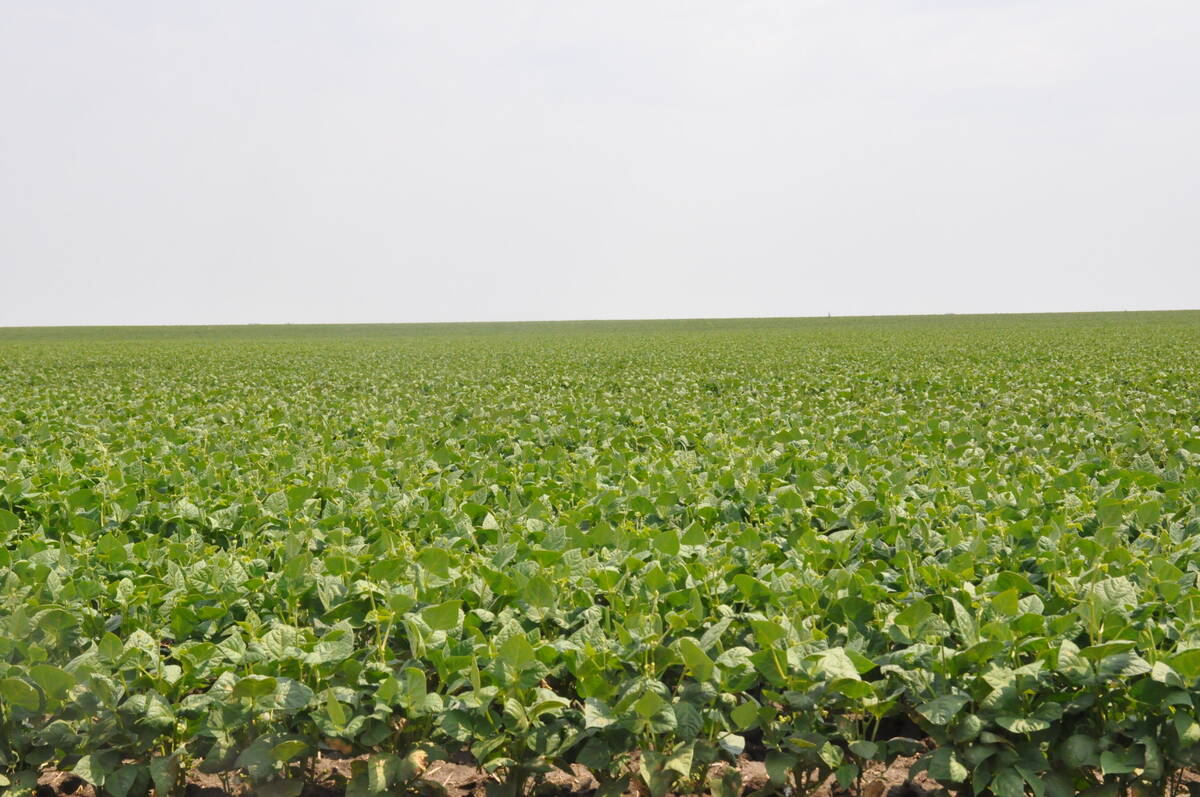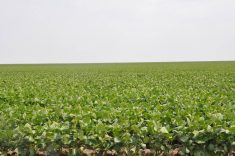VANCOUVER – It’s a familiar landmark on the shoreline of this west
coast port city.
Anyone looking out to Burrard Inlet from downtown Vancouver or Stanley
Park can’t help but notice the incongruous sight of two giant yellow
pyramids across the water on the north shore.
Those pyramids are piles of sulfur, and for years they’ve marked the
location of Vancouver Wharves.
Two years ago those yellow pyramids got a new neighbour, a neat row of
Read Also

Coloured bean production down, whites are up
Bean prices have been slumping and the outlook is for more of the same.
10 bright blue grain bins.
While not as noticeable from across the inlet, those bins represent an
important landmark of their own – the first grain handling facility at
the port dedicated solely to pulse crops and other specialty
agricultural products.
The facility was built to fill a void on the waterfront, says Susan
Forbes, manager of marketing for Vancouver Wharves.
“Those products always got short shrift in the market-place here,” she
said in an interview.
“We felt there was a good opportunity to have a facility that really
specialized in this kind of thing.”
The existing bulk grain terminals weren’t well-equipped to deal with
some of the new products that were showing up at the port as production
patterns and grain markets began changing in recent years.
“It was a real bottleneck getting these products out in bulk, and we
felt we could open that neck of the bottle by building a facility like
this,” Forbes said.
Built to handle 1.5 million tonnes a year, the terminal hasn’t achieved
those volumes in its first two years of operation. But Forbes said the
company remains optimistic about the state-of-the-art operation’s
prospects.
“We hope within the next couple of years to reach the 1.5 million tonne
target.”
She said the company is pinning those hopes partly on continued growth
in special crop production.
“We hope that trend continues. We certainly sense it’s not just a fad.”
Others involved in special crops say Vancouver Wharves’ appearance on
the scene has been positive for farmers, shippers and customers.
Gerald Donkersgoed, manager of Finora Canada Ltd., which uses the
facility for some of its special crops exports, said the facility
provides excellent quality control and much-needed storage capacity.
“The regular grain terminals were reluctant to give the industry
storage when required for shipments,” he said.
That forced shippers to try to co-ordinate shipments from the country
to meet arriving vessels, a risky business that sometimes resulted in
missed contract deadlines, demurrage charges and lost sales.
Industry officials say knowing there is storage capacity in place
enables exporters to be more aggressive in pursuing sales, especially
in the busy fall shipping season.
Vancouver Wharves’ specialized services have also prompted some of the
port’s bulk terminals to upgrade their special crop handling systems in
the last couple of years.
“Competition is a wonderful thing,” Donkersgoed said.
Garry Mihalicz of CGF Brokerage of Saskatoon said the Vancouver Wharves
development was exactly what the industry needed.
The industry has no problems with processing capabilities on the
Prairies, he said. Any logistical problems are invariably associated
with operational problems at the port.
“Anything that will improve the handling and maintain our quality, I
think it’s great.”
He said quality can give sellers a key competitive edge in world
markets.
Forbes said that’s the reputation that Vancouver Wharves is trying to
build for itself.
“I think our big strategic advantage is improved product quality,” she
said. “There’s no other facility in the port that can put product in
such good shape into
the hold.”
The $55 million Vancouver Wharves complex, which opened for business in
April 2000, provides what’s called “soft handling” of fragile or
hard-to-handle products such as food peas, lentils, chickpeas, alfalfa
pellets and cubes, canola meal, malt and malting barley.
More than 2.5 kilometres of special air-cushioned, variable speed,
low-angle conveyor belts provide a smooth ride as the products are
gently moved from rail cars to storage bins to waiting export vessels.
There, special “cascade” loading chutes allow the products to flow
smoothly into a ship’s hold, keeping dust and damage to a minimum.
The facility’s design, which includes a unique spiral loop rail track
capable of unloading 55 car unit trains in a single eight-hour shift
without breaking up the car string, is also ideally suited for handling
shipments of identity-preserved grain.
As well, the 30,000 tonnes of storage capacity reduces the risk of
demurrage charges, a traditional problem for special crop shippers.
The Vancouver Wharves complex sprawls over 111 acres of reclaimed land
directly across the water from Stanley Park.
Besides grain, the complex handles export shipments of sulfur,
fertilizer, mineral concentrates, pulp and paper, and bulk liquids such
as canola oil.
Forbes said the company will probably have to add more storage to
achieve the 1.5 million tonne grain handling target.
But while the facility was designed to allow for easy expansion,
Vancouver’s earthquake-related building codes make it an expensive
proposition, with each 3,000-tonne bin costing about $1 million to
install.
In the original construction phase, eight of the 10 bins were covered
by long-term supply agreements with shippers.
Future expansion could also be fuelled by shipments of some Canadian
Wheat Board grains. While Vancouver Wharves will never try to compete
with the port’s big bulk grain terminals, it is well suited to handle
smaller, identity-preserved wheat shipments.
“The board has talked very positively to us about using us, especially
for some of these specialty volumes,” Forbes said.
“We certainly hope to do that in the next crop year.”
Vancouver Wharves was founded in 1959 and bought in 1993 by BCR, a
provincial crown corporation. In 1999 it was rolled into a new company
called BCR Marine, which also included Canadian Stevedoring and Casco
Terminals. In March 2002 BCR announced it would sell BCR Marine.
Forbes said Vancouver Wharves sees that as a positive development that
could provide new sources of capital for expansion.














